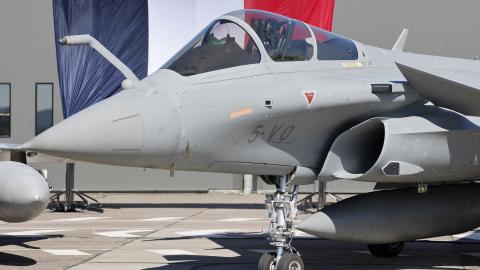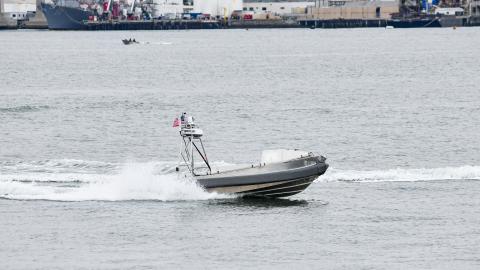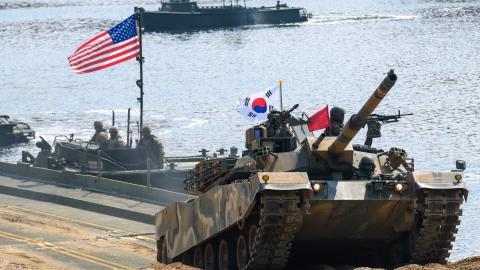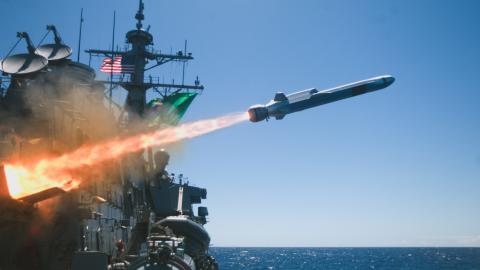Below Senior Fellow Can Kasapoğlu offers a military situation report about the war in Ukraine.
Executive Summary
• A boost for Ukrainian airpower: Ukraine received its first Mirage 2000 fighter aircraft from France, augmenting its air deterrent.
• Advances in North Korean missiles: Open-source intelligence indicates that North Korean tactical ballistic missiles have become more accurate, though the underlying reasons remain unclear.
• Battlefield update: Ukraine has launched a new tactical offensive in Kursk, backed by the successful use of drones and the integration of electronic warfare assets.
1. Ukraine Receives Its First Mirage 2000 from France
Last week the Ukrainian Air Force accepted delivery of its first Mirage 2000 combat aircraft from France. These jet fighters give the war-torn nation a second aerial capability aligned with North Atlantic Treaty Organization standards alongside American-designed F-16s.
After months of training in France, Ukrainian pilots flew the aircraft to Ukraine. The fighters come equipped with a powerful weapons system configuration, including MICA air-to-air missiles manufactured by MBDA France, AASM Hammer guided bombs, SCALP air-launched cruise missiles, and 30mm-class cannons. While Paris did not clarify how many aircraft Kyiv has received, Ukrainian President Volodymr Zelenksyy referred to the jet fighters in the plural form in a social media post. The French government has pledged to provide Ukraine with six Mirage 2000s in total.
The Mirages’ arrival is a milestone for Ukraine’s air warfare capabilities. Throughout the war, the Ukrainian Air Force has used Soviet-vintage combat aircraft like the Su-24 frontline bomber. Mirages fill a much-needed gap in Kyiv’s air deterrent following delays in Belgium’s delivery of its F-16s. They also enhance the combat efficacy of the European smart weaponry Ukraine currently uses. The Mirage 2000’s ability to interface with smart weapons such as SCALP air-launched cruise missiles will significantly boost Ukraine’s combat prowess.
2. Possible Russian Technology Transfers Improve North Korean Ballistic Missiles
A Reuters report last week determined that the North Korean ballistic missiles used by the Russian military have seen a marked improvement in accuracy. Military sources stated that through more than 20 launches, these ballistic missiles achieved an average circular error probable (or CEP, a measure of a weapons system’s precision) between 164 and 328 feet. While this precision does not qualify Pyongyang’s KN-23 as an elite quasi-ballistic missile, it represents a significant and potentially dangerous improvement.
Previous assessments rated the CEP of Pyongyang’s weapons between 0.6 and 1.9 miles, an unimpressive score. While the war in Ukraine has provided North Korea a real-world opportunity to hone its capabilities, the improved accuracy of its missiles cannot be attributed solely to on-the-job training. Russia is likely providing North Korea with better navigation systems, improved flight path stability, and airframe modifications for its missiles.
Regardless, Pyongyang now possesses a more lethal weapon to offer its Russian ally—and to use against South Korea in a potential conflict. Ukraine’s Main Directorate of Intelligence predicts that Russia will receive 150 North Korean tactical ballistic missiles in 2025. With boosted accuracy, these weapons systems pose a severe threat to Ukraine’s military and civilian population.
3. Battlefield Assessment
The battleground remained active last week, with ongoing clashes in Toretsk, Chasiv Yar, Pokrovsk, Lyman, and Vovchansk. On most fronts, Russian forces made territorial gains, though those advances have grown ever more incremental in recent months. According to declassified intelligence reports from the United Kingdom’s Defense Ministry, Russian units gained 123 square miles in January 2025. While this may seem substantial, it is a significant drop-off from 154 square miles in December 2024 and 270 square miles in November 2024.
Still, the slowing pace of Russian territorial gains is no great cause for optimism. In 2024 Russia added 450,000 contracted servicemen to augment its pool of conscripts in Ukraine. And according to the Ukrainian high command, the number of Russian forces in Ukraine grew by 140,000 last year. Additionally, North Korea and Iran continue to supplement the Kremlin’s war machine. And Pyongyang recently dispatched thousands of its citizens to Russia to fill gaps in the nation’s wartime labor force. So despite its diminishing territorial momentum, Russia’s invasion campaign shows no signs of stopping.
Against this backdrop, the Ukrainian Armed Forces have launched a new limited offensive in the Russian region of Kursk, which Ukrainian troops partially occupy. Though many details of the new offensive remain unclear, open-source intelligence has revealed the effort to be a tactical push spearheaded by a combined arms assault detachment roughly the size of two battalions. The main assault axis extends from southeast of the rail hub town of Sudzha into Ulanok.
The initial effort managed to penetrate five miles into Russian-controlled territory after forcing the collapse of the outer lines of Russia’s defenses. Preliminary battlefield data suggests that the Ukrainian military controls Cherkasskaya Konopelka and Fanaseevka, though the Russian Ministry of Defense contends that the villages remain under Moscow’s control and that Ukraine’s attack has faltered.
Evidence indicates that the Ukrainian military used drones and electronic warfare equipment to lay the groundwork for the offensive, mimicking the operational concepts of its initial Kursk offensive in the summer of 2024. These tactics handicapped Russia’s response before it could gather momentum.
Ukraine’s tactical approach highlights the growing importance of fielding cyber and electronic warfare capabilities at scale, as detailed in a new Hudson Institute study, Winning the Fight for Sensing and Sensemaking. In under three years, Ukraine has developed potent electronic warfare capabilities and robotic warfare assets, underscoring how sensor and electromagnetic spectrum technologies formerly available to only an elite club of nations have proliferated widely, including to nonstate armed groups and commercial entities.
General Oleksandr Syrskyi, the commander in chief of the Armed Forces of Ukraine, has discussed how Ukraine established more than 100 electronic warfare companies under the command of its battalions and brigades in 2024. To counter this, Russia has deployed first-person-view drones equipped with fiber-optic cables in both Kursk and Ukraine. This report will continue to analyze the electronic warfare dimensions of the conflict.


















